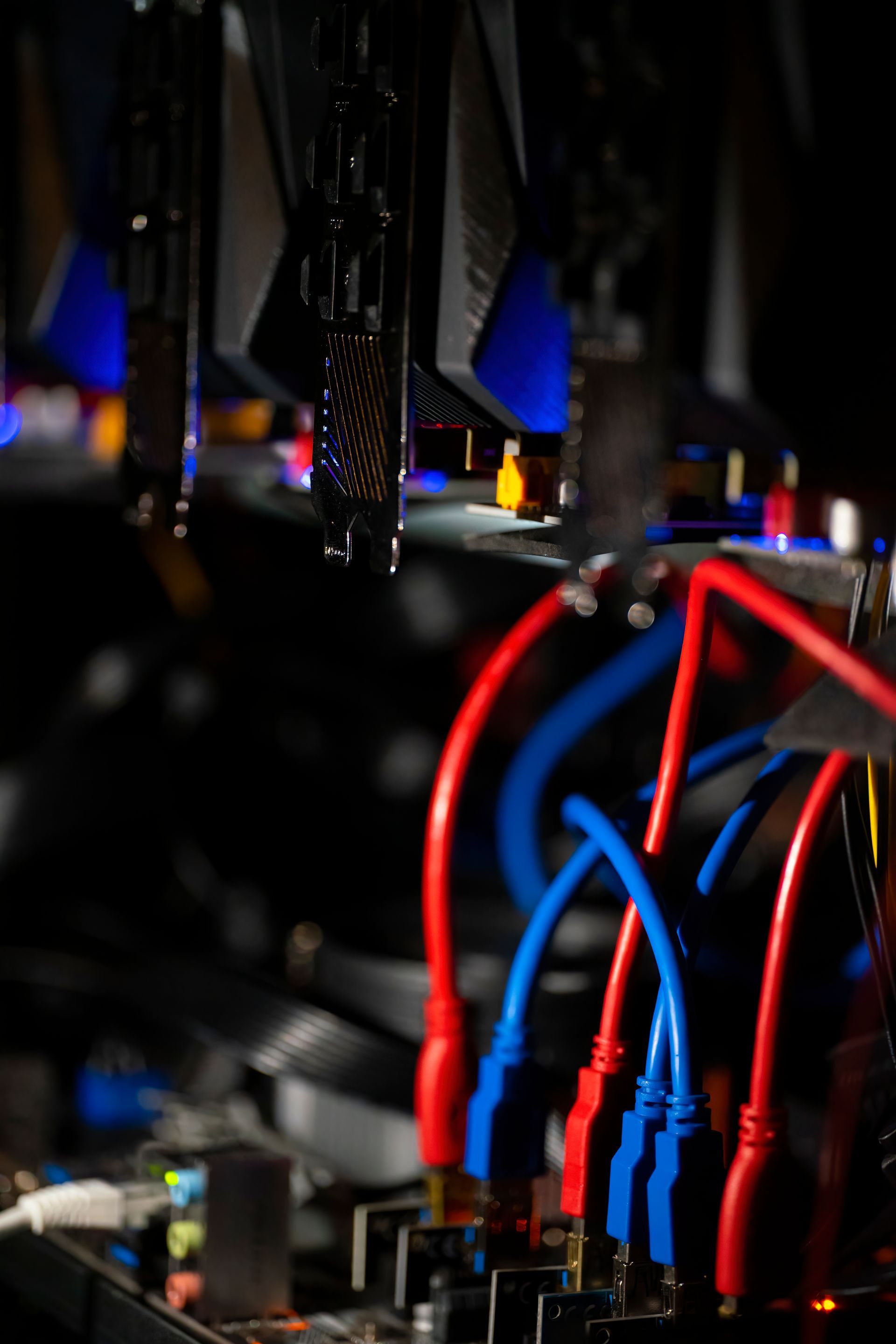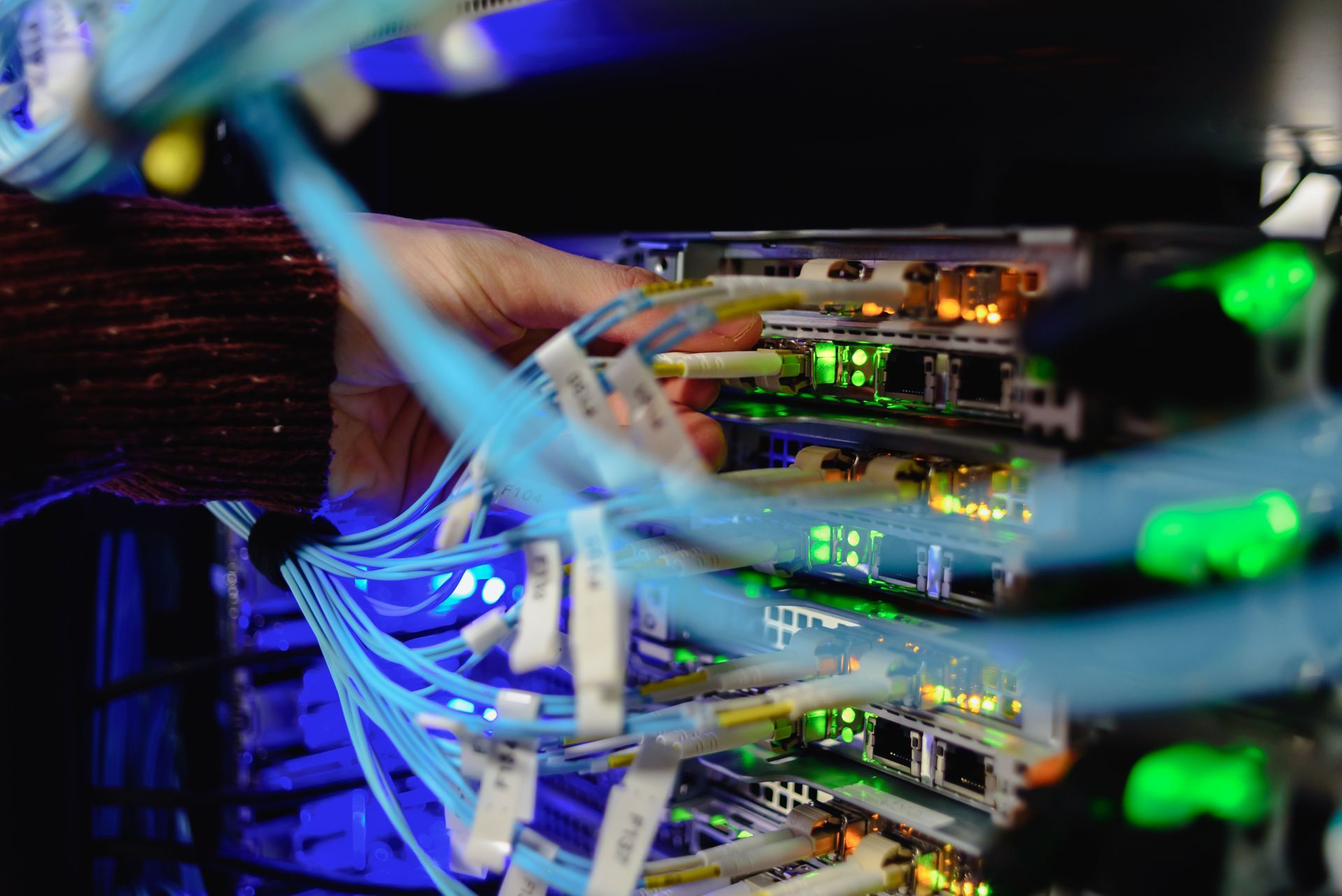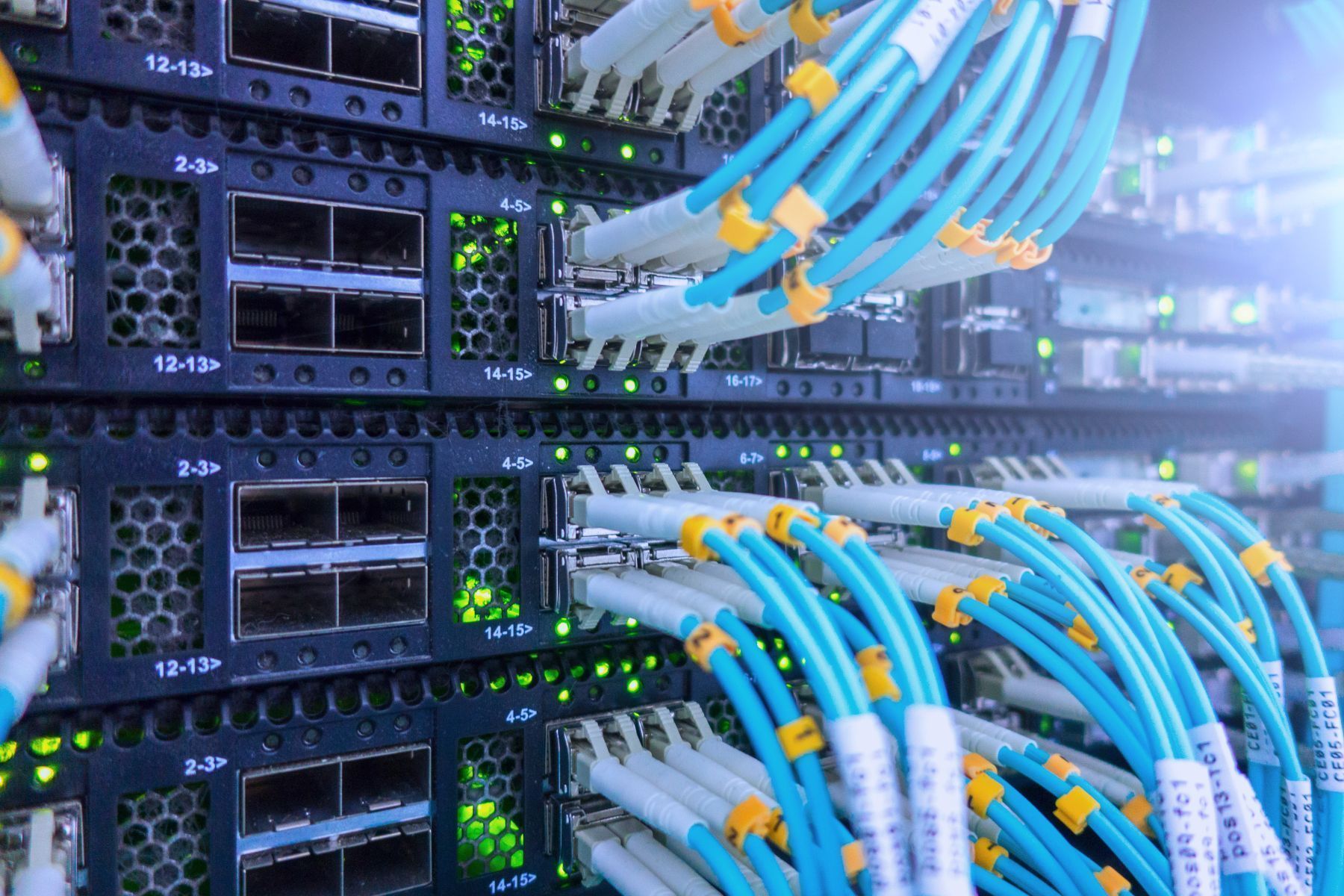
Understanding the Benefits of Fiber Optic Networks
In the digital age, connectivity is king. Businesses, now more than ever, rely on robust and reliable internet solutions. One such solution is fiber optic networks. These networks, built on fiber optic technology, are revolutionizing the way we communicate and work. They offer unparalleled speed and reliability, making them a top choice for businesses worldwide.
But what exactly are fiber optic networks?
In simple terms, they are a type of telecommunications infrastructure. They use light to transmit data at incredibly high speeds. This is a stark contrast to traditional copper networks, which use electrical signals. The shift to remote work has further underscored the importance of reliable internet connectivity. Fiber optic networks, with their high bandwidth and low latency, are perfectly suited to meet this demand. For IT Managers, understanding the technical aspects of fiber optic networks is crucial. This knowledge allows them to implement and manage these networks effectively. For Business Owners, the transition to remote work can be daunting. However, with the right telecommunications system, this transition can be smooth and efficient. Fiber optic networks offer numerous benefits. They provide higher bandwidth, lower attenuation, and improved data security. These advantages can significantly enhance business operations and communication.
In this article, we will delve into the world of fiber optic networks. We will explore their evolution, their benefits, and their role in enabling high-speed internet. We will also provide practical advice on how to leverage these networks for efficient remote work operations. Whether you're an IT Manager or a Business Owner, this article will equip you with the knowledge you need to navigate the world of fiber optic networks. So, let's embark on this journey of understanding the benefits of fiber optic networks.
The Evolution of Fiber Optic Networks
The journey of fiber optic networks began in the 1970s. Early researchers discovered that light could transmit data through glass fibers. This breakthrough laid the groundwork for modern fiber optics. Initially, fiber optic technology was costly and complex. However, advances in manufacturing and materials science reduced costs significantly. By the late 1980s, fiber optics were being deployed globally. The internet boom of the 1990s accelerated the adoption of fiber optic networks. Businesses and consumers demanded faster and more reliable internet connections. Fiber optics rose to meet these demands, offering unparalleled speed and capacity. Today, fiber optic networks are a cornerstone of global telecommunications. They carry vast amounts of data across continents, under oceans, and into our homes. Their adoption has transformed sectors such as finance, healthcare, and entertainment. Furthermore, the technology continues to evolve. Researchers are developing new ways to increase data capacity and improve efficiency. These innovations promise to keep fiber optics at the forefront of communications technology for years to come. Fiber optic networks have paved the way for other technologies. They've facilitated the rise of video streaming services, online gaming, and high-speed cloud computing. Their impact on connectivity and communication cannot be overstated.
As we look to the future, the evolution of fiber optics appears promising. With continuous improvements, fiber optic networks are set to support even more technological advancements. This evolution underscores their critical role in shaping the digital landscape. Understanding the evolution of fiber optic networks helps us appreciate their current role. It also highlights the potential they hold for future innovations in telecommunications.
Fiber Optic Networks vs. Traditional Copper Networks
Fiber optic networks and traditional copper networks serve similar purposes but with differing capabilities. At the heart of the contrast lies the material and method of data transmission.
Copper networks transmit data via electrical signals through metal wires. This technology has been around for decades and remains prevalent. However, it has limitations in speed and capacity.
In contrast, fiber optic networks use light pulses to send data through thin strands of glass or plastic. This method allows for much greater bandwidth and faster speeds. The result is a more efficient data transmission system.
The differences are particularly evident over long distances. Copper networks suffer from signal degradation, requiring signal boosters at regular intervals. Fiber optics, however, can maintain signal integrity over much longer spans.
Here's a quick comparison of the two technologies:
Bandwidth: Fiber optics support significantly higher bandwidths, enabling faster data transfer.
Distance: Copper signals degrade more quickly than light, limiting effective transmission distance.
Interference: Fiber optics are immune to electromagnetic interference, whereas copper is susceptible.
Durability: Fiber optic cables are thinner and lighter but can be more fragile compared to copper.
Additionally, installation and maintenance factors differ. Copper networks are typically easier and cheaper to install initially, given their established infrastructure. However, fiber optic networks require fewer upgrades over time due to their modern design. In terms of cost efficiency, while fiber optics may have higher initial setup expenses, they prove more economical long-term. Their superior durability and minimal maintenance needs reduce costs over time.
Considering the transition to remote work, the benefits of fiber become more evident. Businesses that rely heavily on high-speed internet and large data transfers find fiber optics indispensable. The reliability and speed of fiber networks make them the preferred choice for modern telecommunications needs.
How Fiber Optic Networks Enable High-Speed Internet
Fiber optic networks play a vital role in delivering high-speed internet. Their design and technology allow for rapid data transmission, significantly surpassing traditional methods. At the core of fiber optic technology is the use of light. By transmitting data as light pulses through tiny glass fibers, information moves at near-light speed. This results in faster internet connections and quicker data transfer. One of the main advantages of fiber networks is their ability to handle large volumes of data simultaneously. Traditional copper networks cannot match the bandwidth capabilities of fiber optics. This means more users can access high-speed internet without experiencing slowdowns. The nature of fiber optics also reduces latency issues. Low latency is crucial for applications requiring real-time data transfer, such as video conferencing and online gaming. Fiber optics ensure smoother and more responsive online experiences for users. Moreover, fiber optic networks are highly reliable. Unlike copper, they are less prone to external interference from weather conditions or electromagnetic fields. This reliability translates to consistent internet speeds and fewer service disruptions. Another benefit is scalability. As the demand for higher internet speeds grows, businesses can easily upgrade fiber optic infrastructure to accommodate the need. This makes them a future-proof option for organizations planning for long-term growth.
Ultimately, fiber optic networks are setting new standards in internet connectivity. Their ability to provide high-speed, reliable, and scalable internet makes them essential for modern digital communication, especially in the era of remote work. Businesses investing in fiber optics can enjoy the benefits of superior speed and capacity, staying ahead in the competitive landscape.
Key Benefits of Fiber Optic Networks for Remote Work
Fiber optic networks offer several distinct advantages for remote work setups. Their design inherently supports the high-speed internet demands common among remote teams.
Firstly, fiber optics provide unmatched bandwidth. Remote workers often require simultaneous access to multiple online tools. Fiber's capacity ensures smooth, uninterrupted use of applications like video conferencing and collaborative platforms. Secondly, these networks minimize latency. Quick data transfer with minimal delay is crucial for real-time collaboration. This is particularly beneficial for remote work requiring immediate communication and data exchange.
Reliability is another significant benefit. Fiber optic networks are less susceptible to outages caused by environmental factors. This stability reduces downtime, ensuring remote teams remain connected and productive.
Security is enhanced with fiber optics. Data transmitted through light pulses in optical fibers is harder to intercept and tamper with. This added layer of security is essential for protecting sensitive business information.
In terms of scalability, fiber optic networks can easily accommodate growing data demands. As businesses expand their remote operations, fiber infrastructure can be upgraded to meet increased requirements without extensive overhauls.
Key benefits at a glance include:
- Higher bandwidth for simultaneous application use
- Reduced latency for real-time communication
- Increased reliability with less downtime
- Enhanced data security against breaches
- Easy scalability for growing remote needs
Moreover, fiber optics support telecommuting tools seamlessly. Critical tools like VoIP and video conferencing platforms rely on stable and fast internet connections. Fiber networks provide the necessary support, ensuring clear audio and video quality.
Overall, integrating fiber optic technology into remote work setups enhances efficiency and collaboration. Businesses leveraging this technology can create a robust, secure, and reliable environment for their remote workforce. Adopting fiber optic networks is a strategic move to meet the evolving demands of modern work environments.
Components of Fiber Optic Infrastructure
Understanding fiber optic infrastructure begins with its core elements. The most fundamental component is the fiber optic cable itself. These cables consist of thin strands of glass or plastic that transmit data as light pulses.
Within these cables, fibers are protected by several layers. The core carries light signals, while the cladding reflects this light back into the core. This arrangement minimizes signal loss and maintains high data fidelity over long distances.
Connectors are crucial for linking fiber optic cables to devices and networks. These connectors are designed to align the fibers precisely, ensuring efficient light transmission. Proper alignment is key to minimizing signal attenuation.
Transceivers also play an important role. They convert electrical signals into light signals and vice versa. Located at each end of a fiber optic link, they facilitate data transmission and reception within the network infrastructure.
Patch panels offer a flexible interface between fiber optic cables and network devices. They enable easy management, monitoring, and configuration of connections. This modular design aids in quick identification and troubleshooting of network issues.
Installation requires meticulous planning and execution. Factors such as cable length, bend radius, and environmental conditions must be considered to ensure optimal performance. The right components, correctly installed, create a robust fiber optic network.
Using these components effectively transforms a fiber optic network into a high-speed information superhighway. Each part plays a distinct and critical role in the system. Knowing these elements helps IT managers and business owners design efficient networks, tailored to their specific needs.
Incorporating quality components and professional installation optimizes network performance. As a result, businesses benefit from increased data transfer speeds, improved reliability, and enhanced security. Understanding these components is vital for those considering or managing fiber optic networks.
Installing and Implementing Fiber Optic Networks
Implementing fiber optic networks begins with a comprehensive plan. IT managers should first conduct a thorough site assessment. This involves evaluating existing infrastructure, geographic layout, and specific business needs.
Selecting the right fiber optic components is crucial. The choice of cables, connectors, and transceivers must match the intended application. Compatibility with existing systems ensures seamless integration.
Installation requires skilled professionals. They handle critical tasks such as cable laying, splicing, and connector deployment. Precision in these tasks is vital to avoid future network issues.
A phased approach to installation can be beneficial. Start with key areas where high-speed connectivity is most needed. This gradual implementation minimizes disruption to ongoing business operations.
Considerations for installation include:
- Cable Routing: Plan pathways to avoid physical or electromagnetic interference.
- Environmental Factors: Protect cables from moisture, temperature extremes, and physical damage.
- Future Proofing: Ensure adequate capacity for anticipated growth in data demands.
Post-installation testing confirms network integrity and performance. Comprehensive testing procedures help identify and rectify any issues before the network goes live. Regular maintenance, including monitoring and managing network health, further ensures long-term reliability. Implementing a fiber optic network is an investment in the future. It supports higher data speeds, enhanced security, and scalable growth. Engaging with knowledgeable vendors and consultants can provide valuable insights and reduce potential pitfalls. By following a structured approach to installation and implementation, businesses can maximize the benefits of fiber optic technology. This strategy supports business goals, enhances operational capabilities, and positions enterprises for future success.
Cost-Benefit Analysis for Businesses Upgrading to Fiber
Upgrading to fiber optic networks represents a significant investment for businesses. However, the long-term benefits often outweigh initial costs. It's crucial to conduct a thorough cost-benefit analysis to understand the financial impact.
The primary cost involves the setup of fiber infrastructure. This includes purchasing equipment, installation labor, and necessary permits. Though upfront costs can be substantial, they are typically offset by lower maintenance and operational expenses over time. Fiber optic networks offer a faster and more reliable internet connection. This efficiency can boost productivity and reduce downtime, contributing to a faster return on investment. Businesses often find that improved connectivity leads to better customer service and satisfaction. Scalability is another financial advantage of fiber networks. As businesses grow, fiber's capacity can accommodate increased data demands without significant additional costs. This ability to grow without expensive overhauls is a key consideration for rapidly expanding companies.
Moreover, fiber optic networks can lead to cost savings in other areas. Enhanced bandwidth supports modern tools like cloud computing and high-definition video conferencing. These tools can reduce travel costs and facilitate remote work, offering financial and operational benefits. In summary, while the initial costs of upgrading to fiber may seem daunting, the long-term savings, increased productivity, and scalability provide strong financial incentives. Businesses looking to remain competitive should seriously consider the strategic advantages fiber networks can bring.
Real-World Success Stories: Businesses and Fiber Optics
Many businesses have successfully transitioned to fiber optic networks, reaping significant benefits. A mid-sized tech firm in California saw remarkable improvements post-upgrade. They reported enhanced data speeds and reduced latency, which in turn boosted productivity. Another example is a global retail chain that upgraded its communication systems. With fiber optic infrastructure, they experienced a dramatic reduction in network disruptions. This reliability improved their customer service and streamlined their supply chain operations. A financial services company leveraged fiber optic networks to enhance data security. With highly sensitive information at stake, the shift provided more robust protection against cyber threats. Clients appreciated the increased security, which enhanced the firm’s reputation.
In the healthcare sector, a hospital implemented fiber networking to support telemedicine. The high-speed, dependable connection enabled efficient patient consultations, even in remote areas. This advancement expanded their service reach and improved patient care outcomes. A regional university also adopted fiber optics to boost their e-learning capabilities. Fiber networks provided students and staff with a stable internet connection, facilitating uninterrupted online classes and research work. It significantly enriched the educational experience.
Finally, an entertainment company embraced fiber optic technology to support high-demand streaming services. The upgrade allowed them to deliver high-definition content swiftly and reliably to their global audience, cementing their position in the market. These success stories underline the transformative impact of fiber optic networks on diverse industries. By enhancing speed, reliability, and security, fiber optics have enabled businesses to innovate, grow, and better serve their customers.
The Future of Fiber Optic Technology
The future of fiber optic technology looks promising as demand for faster internet continues to rise. Technological advancements aim to increase both speed and capacity of fiber networks. This could lead to unprecedented connectivity possibilities for businesses. Innovations are focusing on reducing the costs of deploying fiber infrastructure. This makes fiber optic networks more accessible to a broader range of organizations. As a result, smaller businesses may soon enjoy the benefits previously reserved for larger corporations. The integration of fiber optic technology with emerging technologies like 5G is another exciting development. This collaboration could vastly enhance mobile network performance and ensure smoother, more reliable connections. Sustainability is also driving future developments in fiber optics. The reduced energy consumption of fiber networks aligns with global efforts to lower carbon footprints. Hence, fiber optics not only promise speed and efficiency but also contribute positively to environmental goals.
Environmental and Energy Considerations of Fiber Networks
Fiber optic networks offer significant environmental advantages. They consume less energy compared to traditional copper networks. This energy efficiency makes them an eco-friendly choice for businesses mindful of their carbon footprint. The durability and longevity of fiber optic cables further contribute to their sustainability. Fiber cables require less frequent replacement. This reduces waste and lowers the ecological impact over time.
Moreover, fiber optic networks enable efficient use of resources by supporting telecommuting and remote work. Less commuting results in reduced vehicle emissions. This supports broader environmental goals by decreasing the carbon output from daily travel. Fiber technology also supports smart grid initiatives, which optimize energy distribution. With more accurate data, energy providers can balance supply and demand more effectively. This enhances overall grid efficiency and reduces unnecessary power use.
Fiber Optic Networks and Cloud Computing
Fiber optic networks are crucial for effective cloud computing. Their high-speed capabilities ensure quick data transfers. This speed enhances the performance of cloud-based applications and services. Reliability is another key feature of fiber networks. They offer low latency and high stability. These attributes are essential for seamless cloud operations, minimizing downtime and disruptions. Scalability is inherently supported by fiber optic infrastructure. As businesses grow, fiber networks can easily handle increased data loads. This adaptability ensures that cloud resources remain efficient and effective.
Finally, the enhanced data security of fiber optics benefits cloud computing. Secure connections protect sensitive information. This is vital for businesses that rely on the cloud for storing and processing critical data.
Choosing the Right Fiber Optic Solutions for Your Business
Selecting the ideal fiber optic solution involves understanding your unique business needs. Businesses vary in size, industry, and data demands. Tailor your decision to these specific factors to optimize results. Assess your current and future bandwidth needs. High data activities require greater bandwidth. This foresight ensures your fiber network supports future growth. Consider the installation environment. The physical location can impact the choice of fiber optic cables. Some environments require cables that can withstand harsh conditions. Evaluate the required speed and performance levels. Different fiber solutions offer varying speeds. Choose one that aligns with your operational requirements. Budgeting is crucial in the decision-making process. Fiber solutions range in cost based on features and installation complexity. Balancing quality with affordability is key.
Lastly, when making a decision, weigh the following considerations:
- Business size and scalability
- Required bandwidth and speed
- Physical installation environment
- Cost constraints and budgeting
- Future-proofing for growth
- Security and reliability requirements
By addressing these factors, businesses can choose a fiber optic solution that meets their current needs and supports future expansion.
Conclusion: The Strategic Advantage of Fiber Optic Networks
The transition to fiber optic networks provides substantial strategic advantages for modern businesses. These networks offer unparalleled speed, reliability, and scalability. By adopting fiber optics, companies can enhance productivity and communication. This technology not only supports current operations but also enables future growth and innovation. With the rapid shift towards digitalization and remote work, fiber optic networks are essential for staying competitive and agile. Embracing this infrastructure ensures your business remains at the forefront of technological advancement, paving the way for success in a connected world.
Areas We Serve
- Los Angeles, CA Los Angeles, California, United States
- Beverly Hills, CA Beverly Hills, California, United States
- Commerce, CA Commerce, California, United States
- Culver City, CA Culver City, California, United States
- El Segundo, CA El Segundo, California, United States
- Gardena, CA Gardena, California, United States
- Pico Rivera, CA Pico Rivera, California, United States
- Santa Fe Springs, CA Santa Fe Springs, California, United States
Get started with Cat5Guy today!
Whether you need a new network installation, a Wi-Fi upgrade, or emergency cabling repairs, we’re here to help.


Get a Free Quote Today!
Contact Us
We will get back to you as soon as possible
Please try again later

Contact:
📞 Phone: (213) 273-3561
📧
Email: mike@cat5guy.com

